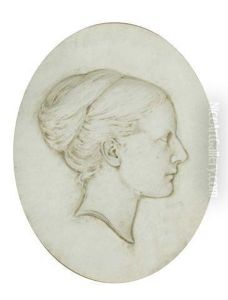Albert Bruce-Joy Paintings
Albert Bruce-Joy was an Irish sculptor, born in Dublin on May 21, 1842. His career spanned the late 19th and early 20th centuries, a period that saw the transformation of sculpture from neoclassical ideals to more realistic representations. Bruce-Joy was known for his portrait statues and busts, which were celebrated for their lifelike quality and attention to detail.
Educated initially at the School of Art in Dublin, Bruce-Joy's talent soon earned him a scholarship to the Royal Academy Schools in London, where he further honed his skills. His early work was influenced by classical themes and the grandeur of ancient sculpture, but as his career progressed, he focused increasingly on portraiture and public monuments, reflecting the Victorian era's fascination with commemorating public figures and events.
Bruce-Joy's sculptures can be found in public spaces and galleries across the United Kingdom and Ireland. Some of his most notable works include the statues of John Bright in Rochdale, and Richard Cobden in Camden, London, which exemplify his ability to capture not just the physical likeness but also the essence of his subjects. His work was characterized by a meticulous attention to detail, whether in the drapery of clothing or the expression of the face, which brought his subjects to life.
Despite his success, Bruce-Joy's name is not as widely recognized today as some of his contemporaries. Nevertheless, his contributions to the field of sculpture, particularly in the realm of public monuments and portraiture, remain significant. His works continue to be studied and admired for their craftsmanship and artistic quality.
Bruce-Joy spent his later years in England, where he continued to sculpt until his health declined. He passed away on July 22, 1924, leaving behind a legacy of work that continues to be celebrated for its artistic merit and historical significance. Bruce-Joy's career reflects the broader trends in art of his time, from the grandeur of neoclassicism to the more personal and realistic portrayals of the Victorian era, making his body of work a valuable part of the history of sculpture.
